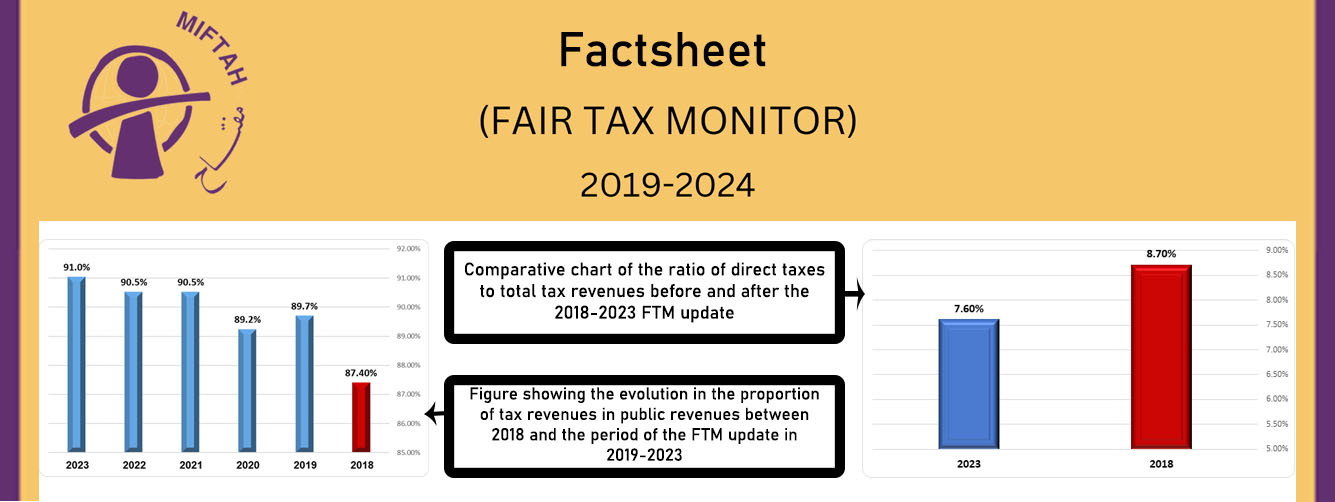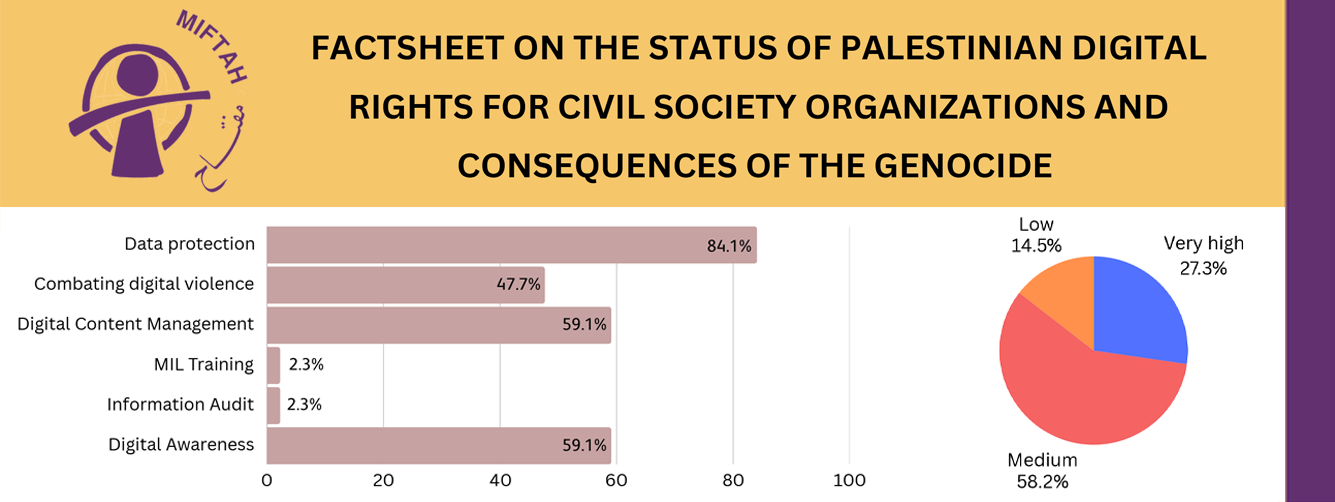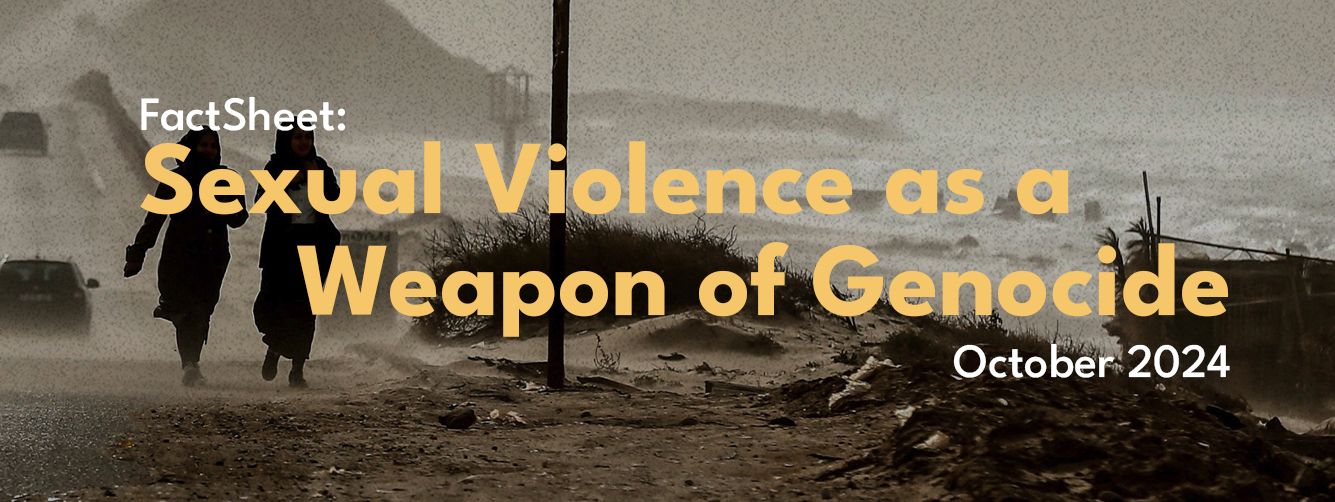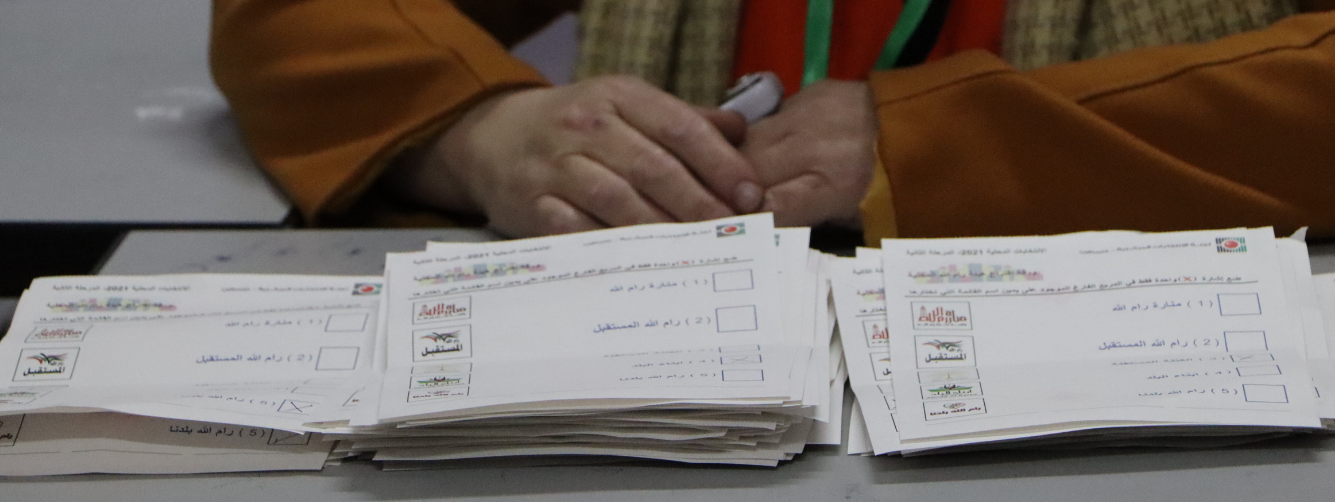
Introduction:
The second phase of local elections was held on March 26, 2022 in 50 local councils in the West Bank. According to data provided by the Central Elections Commission (CEC), candidates vied over a total of 632 local council seats, while 23 local councils won by acclamation where only one electoral list ran. Furthermore, elections were not held in 29 councils in either phase. Voter turnout was 53.69% of the total number of 715,413 eligible voters. Phase Two of the elections saw a low voter turnout in the main governorates such as Ramallah, 38.4%, Nablus, 41% and Jerusalem, 38.6% while Tubas saw the highest turnout at 86.8%, followed by Salfeet, at 77.5%.
The first and second phases of local elections were held under unstable political circumstances and in the absence of any political prospects, especially since neither phase was held in the Gaza Strip after the democratic process there being brought to a halt with the inception of the political division. The Cabinet decision, made on 6/9/2021 to hold local elections in two stages was met with criticism and pushback from civil society institutions, which refused the decision to fragment the elections.
The second phase of elections was held in councils categorized as “A and B” and in areas categorized as “C and village councils” where elections were not held in the first phase. The first phase of elections was held in 154 local councils, where votes were cast, and 163 by acclamation. Meanwhile, 62 local councils were transferred to the second phase.
Women and youth presence in electoral lists
Youth representation in electoral lists:
The percentage of youth who won in Phase Two of local council elections was 16% among the 25-35 age bracket, in comparison to 21.7% in the first phase, 27% in the 36-45 year age bracket compared to 27.4% in the first phase, 30% in the 46-55 age bracket in comparison to 28.6% in the first phase and 27% in the above-55 age bracket in comparison to 22.3% in the first phase. This indicates a decline in the presence of youth in the second phase even though the candidacy rate for youth between 25-45 was higher than 59% of overall candidates but who only won 43% of the seats.
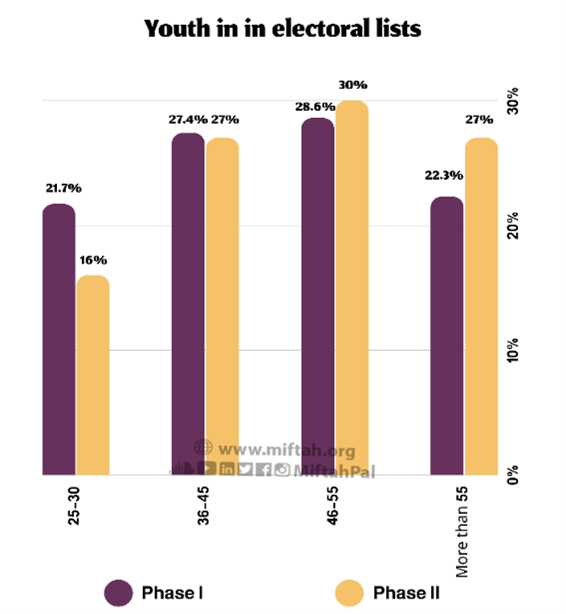
Women’s presence in electoral lists:
Upon comparison between the two phases of local elections, there was a noticeably higher presence of women in competing lists, especially in the larger districts, totaling 27% of the overall number of candidates. Moreover, there was a decline in the percentage of women candidates who won through the ballot boxes. In the second phase, only 19% of women runners won by acclamation and voting: 18% by votes and 21% by acclamation. This was a decline from the first phase, where women won 20.5% through voting and 21.8% overall by voting and acclamation, meaning that these percentages confirm that women’s presence in local councils was only maintained because of the women’s quota. Abiding by this quota was the only guarantee that women would have a place in electoral lists in general.
Women ranking fifth and beyond
In the second phase of local council elections, there were eight lists headed by women, two in Ramallah, two in Bethlehem and one each in Nablus, Tulkarm and the town of Yaabad, in the Jenin district. There was also a women-only list in the town of Beit Ummar in the Hebron district. Still, none of these lists won the highest number of votes among competing lists in their local councils. However, the “Manarat Ramallah” list won second place in ranking after the “Abna Al Balad’ list.
According to data collected by MIFTAH from lists competing in the second stage of local elections, the results showed similar numbers regarding women’s presence in the two phases with a focus on fifth place and beyond in ranking.
- The percentages showed that 26.67% were in the fifth ranking in competing lists, followed by 13.25% in the seventh ranking and 11.74% in the eighth.
- The data showed that the appearance 68.93% of women candidates in lists were between rank 5 and 9, which is the required number according to the women’s quota.
- 1.34% of women were in the primary seats in only eight lists, 1.84% were in the second seat and 6.2% in the third.
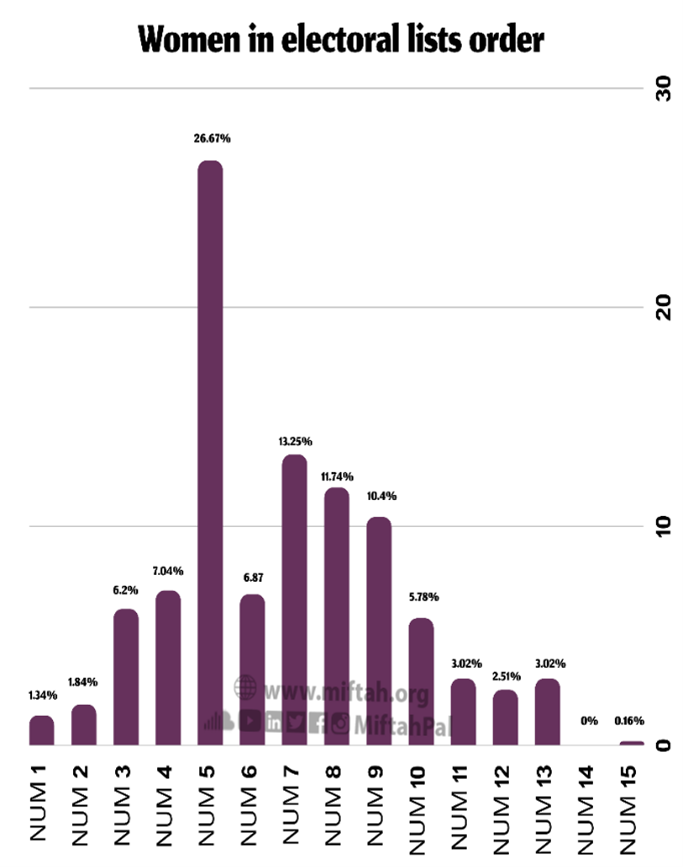
Presence of women in electoral campaigns
The second phase of local elections saw a considerable increase in the visibility of women on the lists’ promotional posters and flyers. Women’s presence throughout the campaigning period reached 83.3% of the lists, compared to only 28% of these lists during the first phase.
- The Bethlehem, Jericho, Salfeet, Qalqilya and Tulkarm districts witnessed 100% visibility of women
- Tubas had the lowest percentage of women’s presence in competing lists, with their visibility at only 39.5%, followed by Jenin, at 46.1% and Jerusalem at 51.5%.
- The Hebron, Ramallah/Al Bireh and Nablus districts saw 100% visibility of women on their lists in major cities, while they were absent from campaigns in some other local councils in the districts. In these councils, the second phase of the elections was considered a continuation of their elections after they failed to form lists in the first phase.
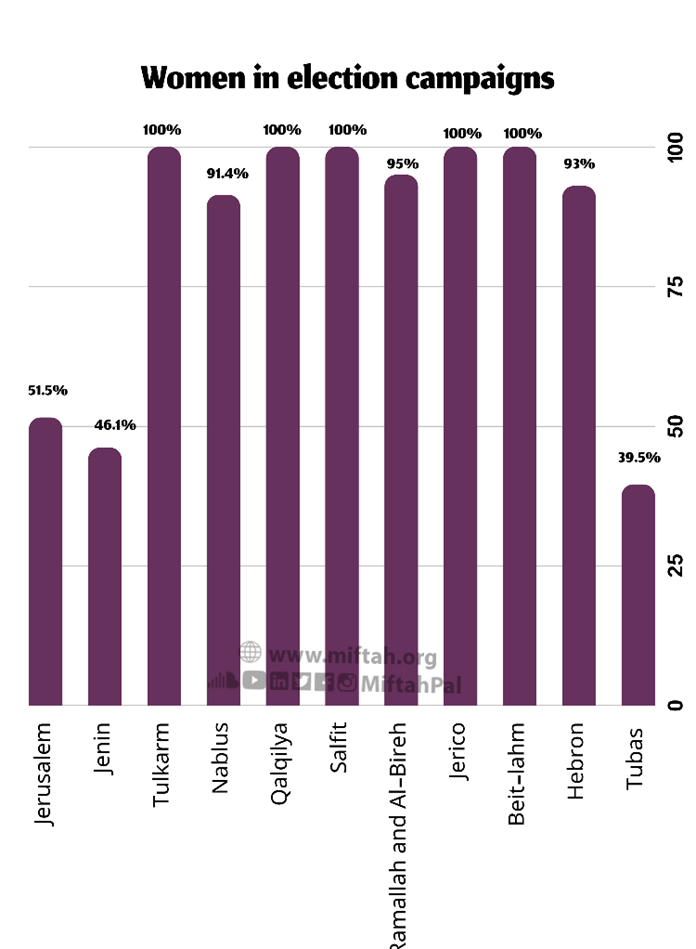
Findings:
- The data indicated that women’s percentages did not change in electoral lists overall, comprising 20% of seats in both phases. This confirms that the presence of women in electoral lists was due to the application of the quota system, thus pointing to a lack of social and political support for women’s political participation.
- Women’s visibility during campaigning saw a noticeable increase, sometimes even higher than men in major cities. This increase in women’s percentages on lists and their visibility in the campaigns was a crucial part of the civilized image competing lists wanted to put forth. The main cities particularly saw women participate in all campaign events, visits and debates. They were also present in “family diwans”/gatherings and other events in which women were mostly not present for in previous local elections, especially in the Hebron district. This could be attributed to the fact that the second phase of elections was held in areas with large population diversity in addition to the presence of relative civic discourse, which helped women to be part of election campaigns, especially in lists headed by women such as in the following cities: Ramallah: 2; Bethlehem:2; Tulkarm 1; Nablus 1. Their visibility as the head of lists was front and center on the posters. Calculation of percentages without the areas transferred from the first to second phase puts women’s presence at nearly 100%, except in Jenin and Tubas.
- During the second phase of elections, youth in the 25-35 age bracket won by only 16%, compared to 21.7% in the first phase. The results from Phase Two show that the older the candidate were the more chances they had, with statistics indicating a correlation between age and opportunity to win local council seats.
- Data on the order of women in lists points to the lack of any major differences in their order in the first phase of the elections. In most lists, their order coincided with the women’s quota. Results showed that 26.67% of women ranked fifth on lists and 68.93% in the central region between fifth and ninth place, while first, second and third places were held in communities where female candidates did not exceed 9.38%.
- Data showed that in only one local council did women exceed the quota, which was in the city of Ramallah where women won five out of 15 seats. This can be attributed to the quantity and order of their presence on lists, which was higher than in other regions.
Recommendations:
- Not to allow a repeat of fragmented elections and to hold them on one election day in all Palestinian districts
- Ratifying binding legal texts for electoral lists pertaining to women’s presence in campaigns and not to limit their presence to codes such as the code against infringement on women’s rights in local elections and the code of conduct signed by Palestinian factions.
- Starting a community dialogue on required and priority legal amendments to guarantee a democratic process supportive of the presence of women and youth in local councils. Most importantly, this includes raising candidacy age, increasing the women’s quota to 30% in order to attain full equality, lowering the threshold for lists to 5% instead of the current 8% and reviewing legal material pertaining to the number of candidates on lists, which would increase the chances for women and youth representation.
- Renewal of the dialogue on amending the electoral system, which would promote freedom of choice for candidates within lists and modify it in a way that would not affect the representation of women in local councils.
To View the Full Factsheet as PDF








